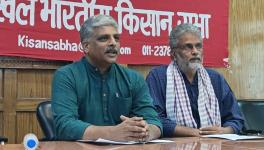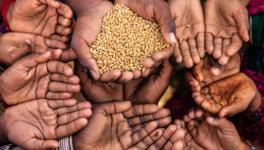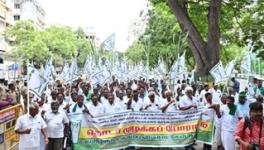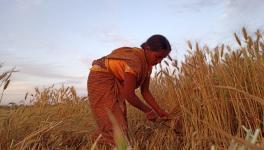Budget ‘23 Must Reverse Years of Injustice to Rural India
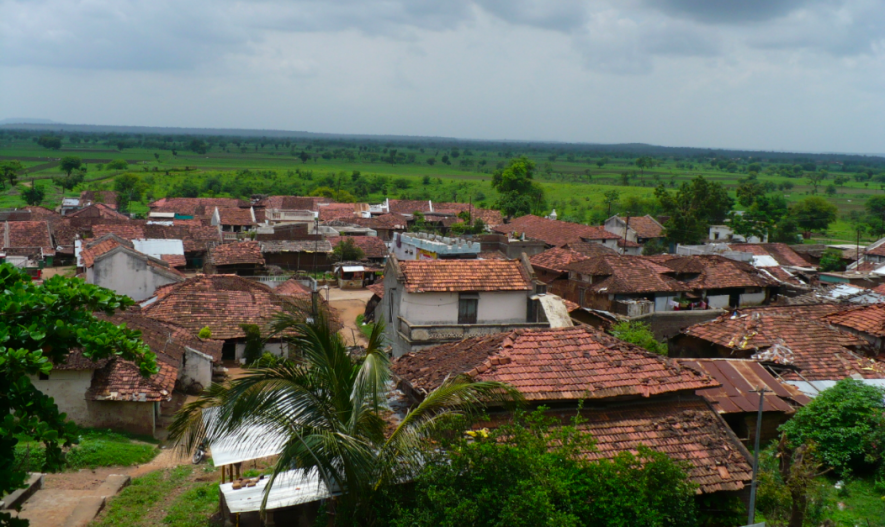
Almost two-thirds of Indians live in rural areas, but no recent Union Budget has done them justice. Despite rhetoric about how crucial the village economy is and Bharat versus India debates, allocations for several ministries that influence rural India have mostly fallen over the years. The three ministries specifically concerned with rural livelihood and well-being are Agriculture, Cooperation and Farmers’ Welfare, Rural Development and Fisheries, Animal Husbandry and Dairying.
The budgetary allocation for agriculture and allied sectors such as fisheries, animal husbandry, dairying, and so on has ranged between two and five per cent of the total Union Budget over the last seven years. Even in terms of share of GDP, the allocation for agriculture and allied sectors has ranged between 0.3% and 0.7%. (See Budget in the Time of the Pandemic, Centre for Budget and Governance Accountability). This sum is inadequate to support a third of the population and explains why the standard of living in rural India is poor.
The Pradhan Mantri Kisan Samman Yojana, which involves cash transfers to farmers, is the main reason for a recent increase in the share of rural India in the annual Union Budget. However, the allocation is still within 5% of the Budget. More on the minus side, there has been a substantial reduction in the Revised Estimates in some years compared to what was initially allocated for some crucial schemes. This discouraging trend was visible even in 2020-21 when people had expected a special COVID-19 relief package to increase the share of rural India. The Revised Estimate for 2020-21 for the Ministry of Agriculture fell short of the original allocation (known as the Budget Estimate) by a massive Rs. 17,000 crore or so. Even the prestigious Kisan Samman Nidhi got slashed by Rs. 10,000 crores. Another much-publicised scheme to foster farmer-producer organisations or FPOs saw a 50% cut.
Such cuts reduced the Revised Estimates for 2020-21 to just a 3.7% share of the Budget. This figure was not just significantly lower than the Budget Estimate for this year (4.8% of the Budget). It was even lower than the actual expenditure incurred during the previous year (2019-20). And, in 2019-20, the spending only accounted for a 3.9% share in the Budget.
Few notice how such arbitrary and significant cuts impact the lives and livelihoods at the grass-roots. Not just that, lower allocations at the Revised Estimate stage seriously dent the credibility of the Union Budget. In recent times, people have realised that significant grants are announced, which raises hopes, but those expectations remain unfulfilled as the original allocation never materialises. (See CBGA’s Decoding the Priorities of the Union Budget).
We can see many instances of the Budget failing to materialise after raising expectations sky-high. The Pradhan Mantri Krishi Sinchayee Yojana includes several sub-schemes governed by different ministries. If we add up all their allocations, in 2019-20, the Budget Estimate was Rs. 9,843 crore, which got reduced to Rs. 7,958 crore in the Revised Estimate. Again, the following year (2020-21), the Budget Estimate of Rs. 11,378 crore was reduced to a Revised Estimate of Rs. 8,206 crore. Thus, about Rs. 5,000 crore was slashed from this high priority scheme over these two years.
In 2019-20, the Rashtriya Krishi Vikas Yojana faced a significant cut from a Budget Estimate of Rs. 3,745 crore to a Revised Estimate of Rs. 2,760 crore. In 2020-21, this reduction repeated itself by a massive cut from the Budget Estimate of Rs. 3,700 crore to Rs. 2,551 crore.
In 2019-20, the Market Intervention Scheme and Price Support Scheme faced reductions from Budget Estimates of Rs. 3,000 crore to Rs. 2,010 crore in the Revised Estimate. And the Budget Estimate of Rs. 2,000 crore was slashed in the Revised Estimate to Rs. 996 crore.
Such cuts can have a very adverse impact on the outcomes and performance of schemes. This is because every project has certain fixed costs, which must be met whether or not there is performance on the ground. Therefore, on-ground work and related benefits never reach the people when scheme allocations are reduced.
For the Ministry of Rural Development, the allocations have ranged between 3.8% and 5.7% of the total budget expense during the last seven years. The lowest, 3.8% share, in the Budget Estimate was in 2021-22. As a percentage of the GDP, the allocation for Rural Development Ministry has ranged between a low 0.53% and 1.00%.
So, if we combine the allocations for all three ministries, agriculture, the allied sectors and rural development, the funding during the last seven years has bounced from 6.3% and 10.5% of the total budget share, which is a meagre provision. The 10.5% peak was achieved in the 2020-21 Revised Estimate when the government announced the COVID-19 relief packages under the Rural Development Ministry. As a result, the Revised Estimates of expenditure by the Rural Development Ministry peaked at 5.7% of the budget share in 2020-21.
Unfortunately, even though most of the concerns that had led to the increase in expenditure persisted, the government went back in the next year to hastily and prematurely withdraw the hikes. The result was that the Budget Estimate in 2021-22 slumped to 3.8% of the budget share, compared to a Revised Estimate of a 5.7% share in the previous year. Again, if the estimates of all three ministries are added up, the Budget Estimate in 2021-22 was quite low, a 7.7% share of the total Budget.
In particular, the premature decision to reverse the significant increase in allocations for the rural employment guarantee scheme MG-NREGA brought tragic consequences for the poorest citizens living in rural areas. As lockdowns, shutdowns, and partial reopenings of the economy continued, the demand for work remained high, which exhausted the available limited Budget all too quickly. Many economists, activists and non-government organisations said MG-NREGA funds must be hiked mid-year, but the shortage persisted.
India has a legacy problem with lower than desirable fund allocations for rural areas. However, the present National Democratic Alliance government, despite its rhetoric of doubling farm incomes, has not checked this trend in a sustained or significant way. This neglect of rural areas comes at the cost of the majority of Indians who either live in rural areas or maintain close links with their village. In fact, the present government rolled back even the limited increase brought by COVID-19 relief packages. For all these reasons, the central government must urgently and significantly raise allocations for rural India in Union Budget FY 2022-23.
The writer is honorary convener, Campaign to Save Earth Now. His recent books include Man Over Machine and Planet in Peril. The views are personal
Get the latest reports & analysis with people's perspective on Protests, movements & deep analytical videos, discussions of the current affairs in your Telegram app. Subscribe to NewsClick's Telegram channel & get Real-Time updates on stories, as they get published on our website.











